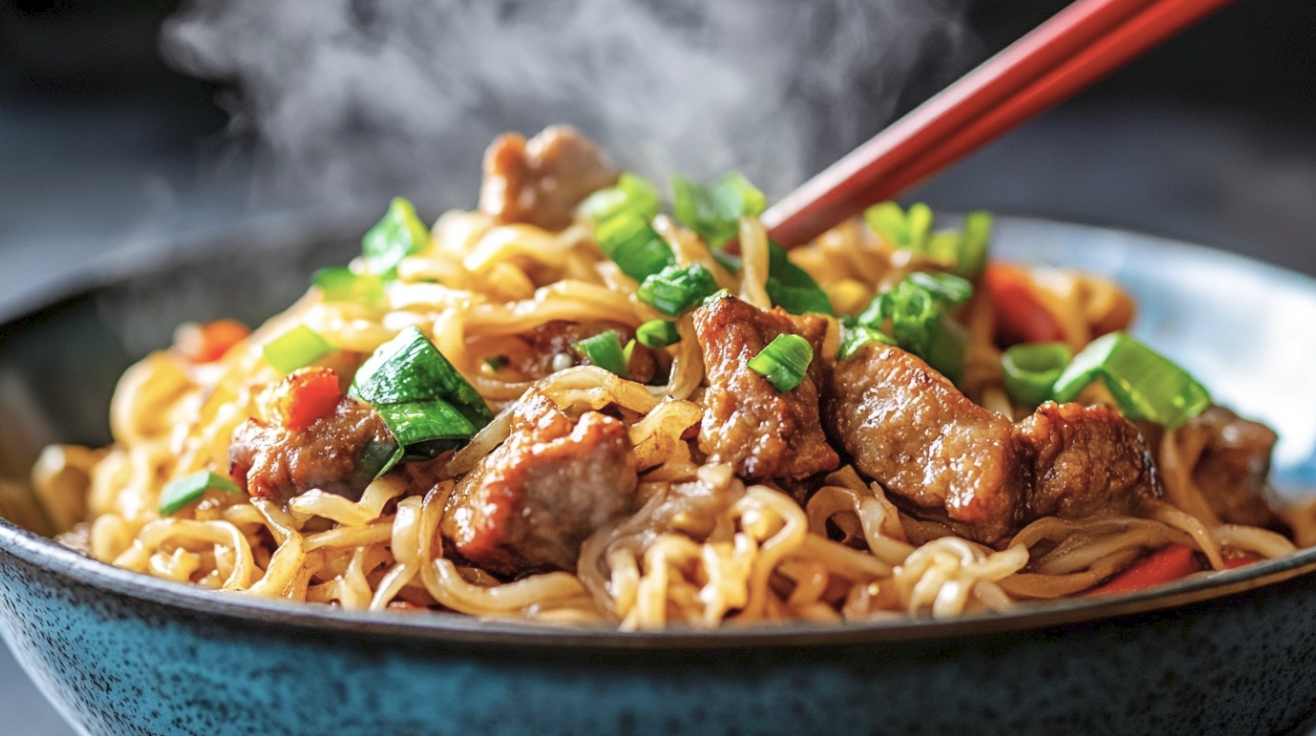
Noodles are a staple across many cultures, offering a versatile base for countless dishes.
Noodles come in various shapes, sizes, and flavors, from the rich, hearty pasta of Italy to the delicate, slurp-worthy ramen of Japan.
Understanding the different types of noodles can greatly enhance your culinary skills and appreciation for global cuisine.
This blog will introduce you to various noodles, covering everything from classic spaghetti to unique varieties like glass noodles and soba.
By the end, you’ll recognize each type and learn how to use them in cooking.
Whether preparing a simple weekday meal or an elaborate feast, knowing your noodles will elevate your dishes.
What are the Different Types of Noodles and Pasta?
1. Spaghetti
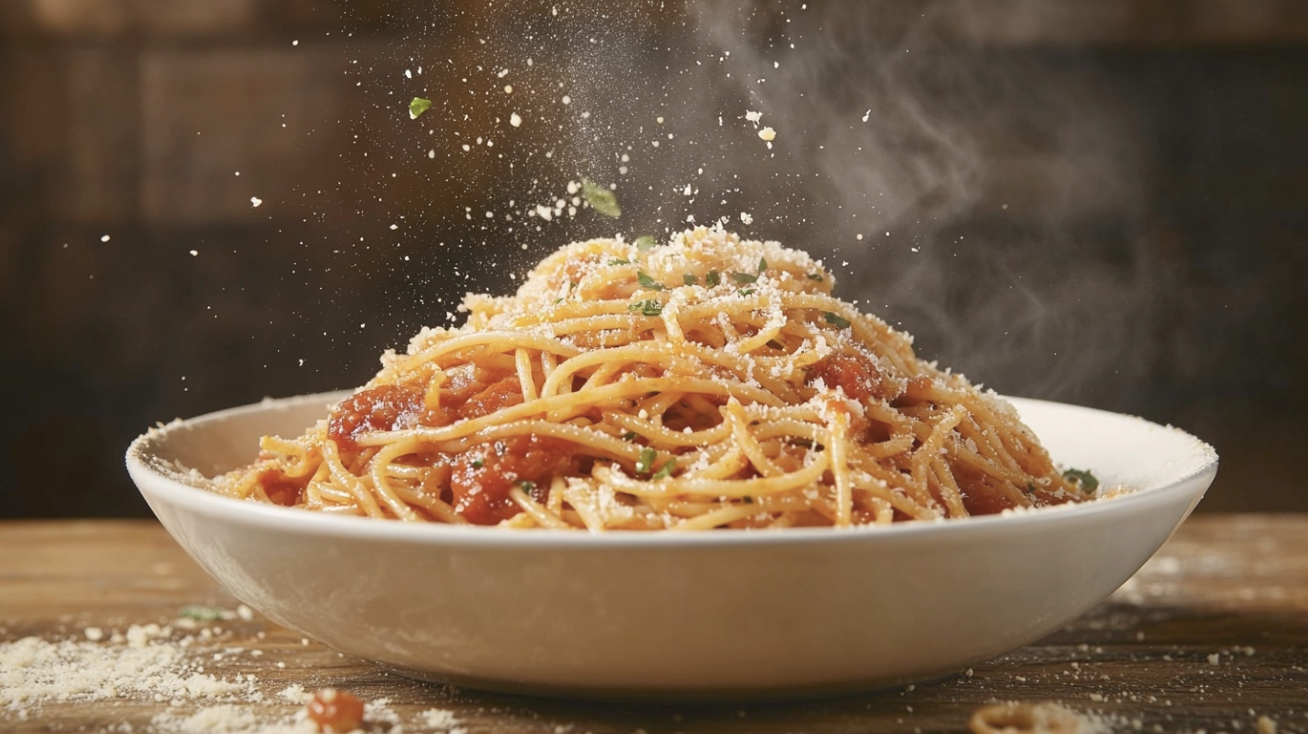
Spaghetti is a long, thin, cylindrical noodle, perhaps the most recognizable type of pasta. It is typically made from durum wheat and water.
This versatile noodle is commonly used in various dishes, from simple marinara sauces to complex preparations like carbonara or Bolognese.
Spaghetti, originally from Italy, has become a global symbol of Italian cuisine. It is traditionally served as a primo, or first course, in Italian meals.
Spaghetti is usually made from durum wheat semolina but can also be found in whole wheat, gluten-free, and other variations.
2. Fettuccine
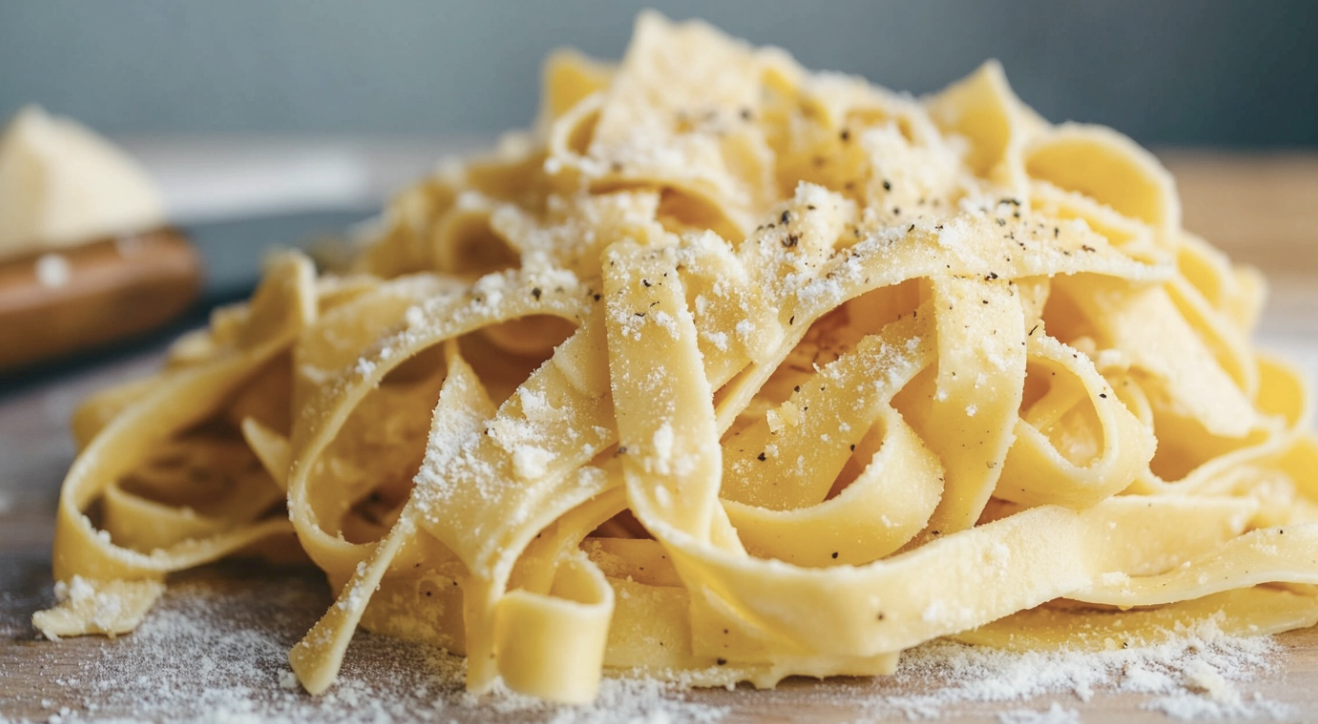
Fettuccine is a flat, thick pasta noodle similar in shape to a ribbon. It is wider than spaghetti but shares a comparable length.
Fettuccine is ideal for heavier sauces like Alfredo or Bolognese, as its broad surface holds onto sauces well.
Fettuccine is a traditional pasta from the Lazio region of Italy, often associated with the famous dish Fettuccine Alfredo.
Typically made from durum wheat and water, it can also be enriched with eggs for a richer texture.
3. Ramen
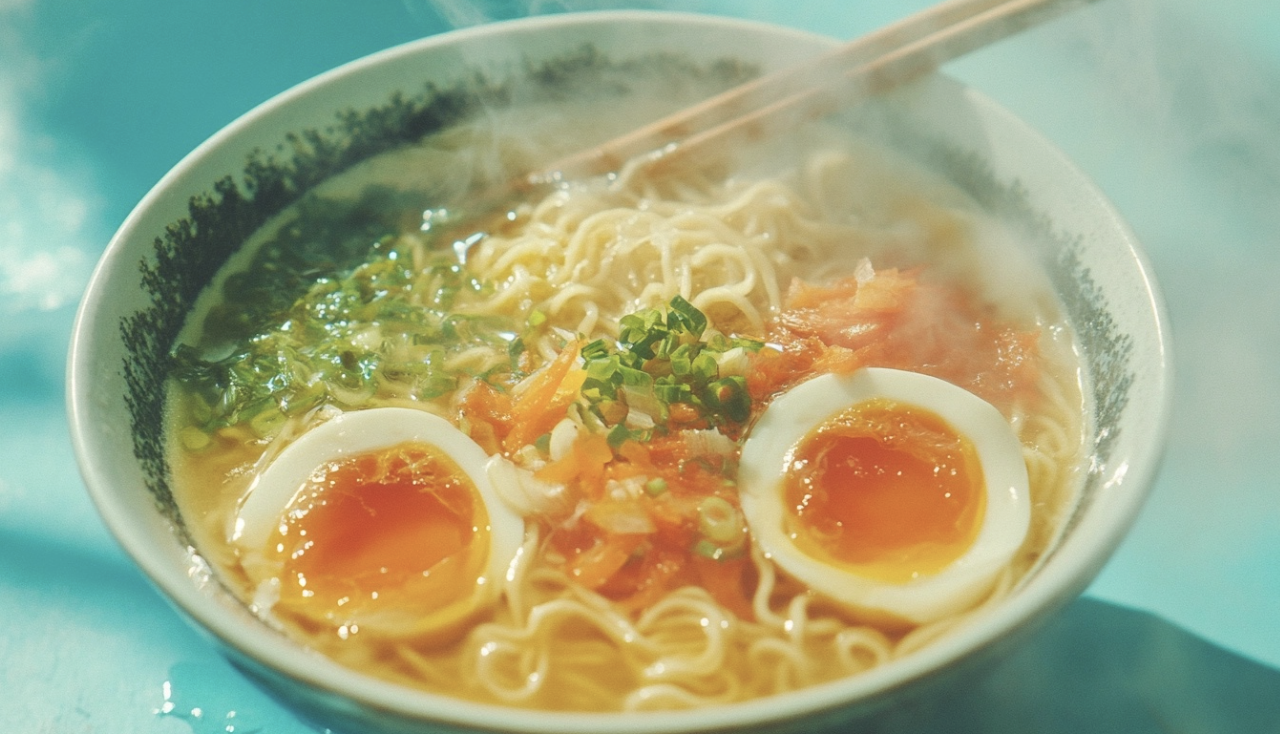
Ramen noodles are thin, wheat-based, often wavy or straight, used in the famous Japanese noodle soup.
Ramen is typically served in a savory broth, often topped with sliced pork, nori, and soft-boiled eggs.
Originally from China, ramen was introduced to Japan, where it evolved into a cultural icon. Ramen shops are a staple in Japanese cities, and instant ramen has become a global convenience food.
The noodles are made from wheat flour, salt, water, and kansui (a type of alkaline water), which gives them their characteristic texture.
4. Udon
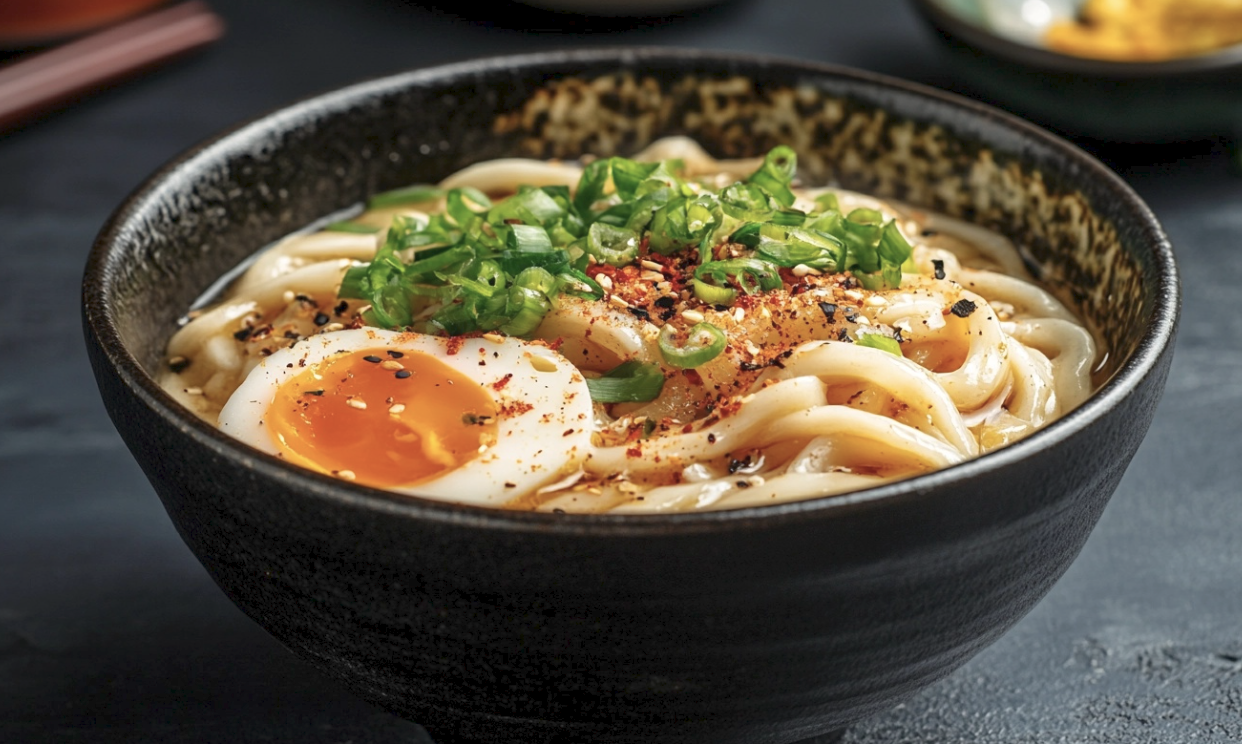
Udon noodles are thick, chewy, made from wheat flour, water, and salt. They are one of the thickest types of Japanese noodles.
Udon is typically served in a mild broth, either hot or cold, and can be topped with ingredients like tempura, green onions, and tofu.
Udon is a traditional Japanese noodle that has been enjoyed for centuries. It is often associated with comfort food in Japan, especially during colder months.
Udon noodles are made from wheat flour, water, and salt and are known for their soft, chewy texture.
5. Soba
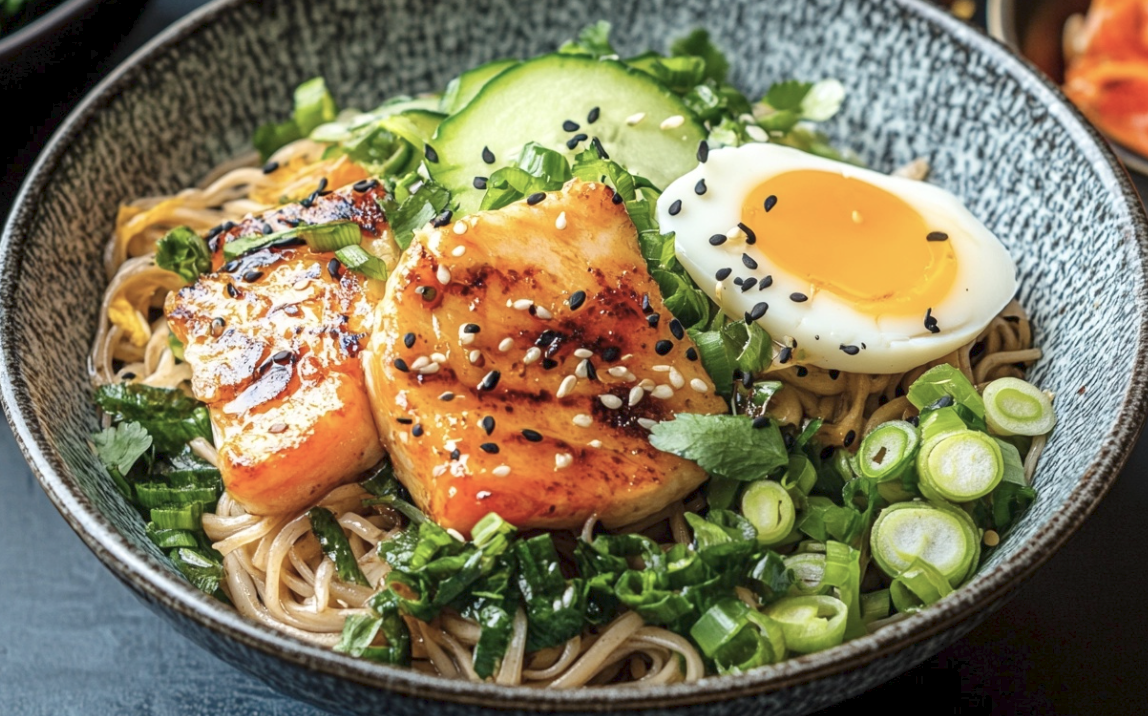
Soba noodles are thin, buckwheat noodles that are slightly nutty in flavor and often darker in color than wheat noodles.
Soba can be served in a broth or with a dipping sauce. It is also a popular ingredient in salads and stir-fries.
Soba is a traditional Japanese noodle with a history dating back hundreds of years. It is often eaten during special occasions like New Year’s Eve (Toshikoshi Soba).
Made primarily from buckwheat flour, sometimes blended with wheat flour for elasticity.
6. Rice Noodles
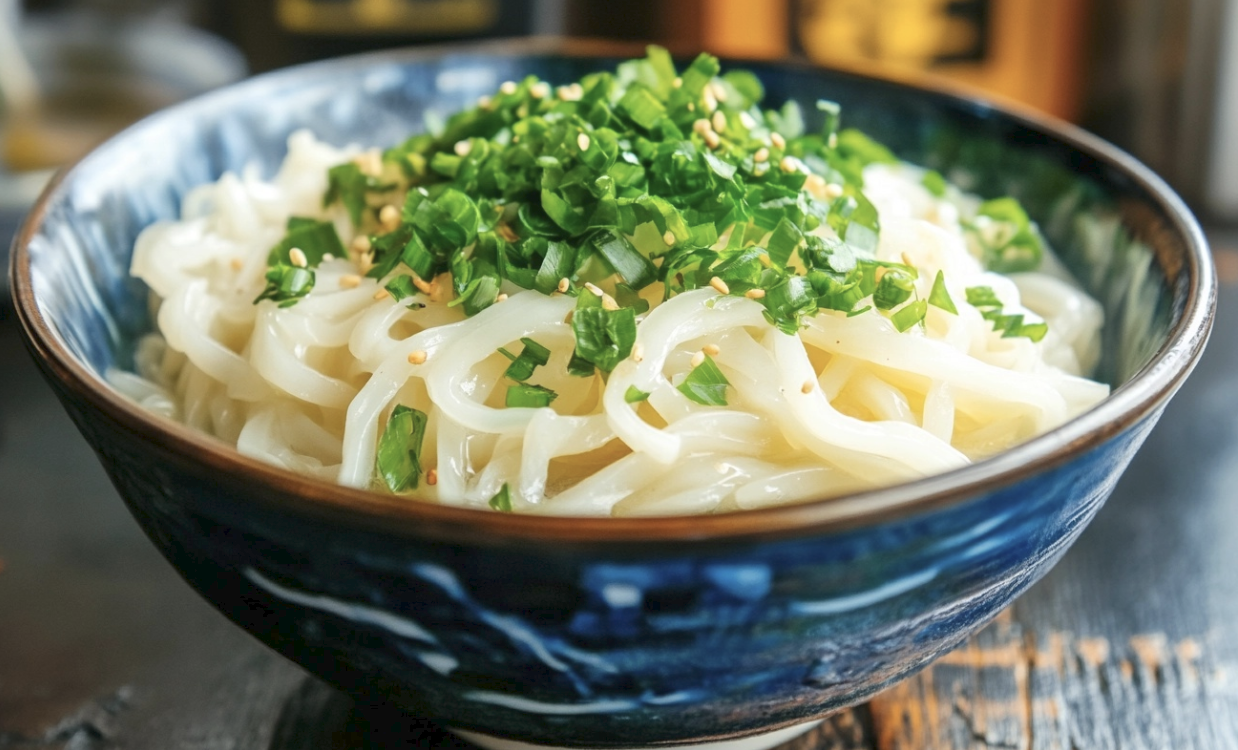
Rice noodles are thin, translucent noodles made from rice flour and water. They come in various shapes and sizes, from thin vermicelli to wide, flat noodles.
Rice noodles are widely used in Asian cuisines, particularly in stir-fries, soups, and salads. They are a key ingredient in dishes like Pad Thai and Pho.
Rice noodles are a staple in many Southeast Asian cuisines, including Thai, Vietnamese, and Chinese cooking.
Made from rice flour and water, these noodles are naturally gluten-free, making them a popular choice for those with gluten sensitivities.
7. Glass Noodles
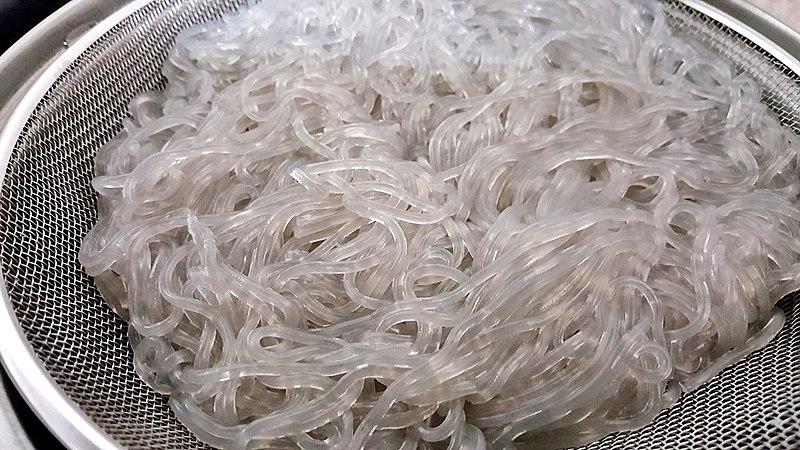
Glass noodles, cellophane, or bean thread noodles are thin, translucent noodles made from mung bean or sweet potato starch.
These noodles are often used in soups, salads, and stir-fries, as they absorb the dish’s flavors well. They are also popular in hot pots.
Glass noodles are commonly used in Chinese, Korean, and Southeast Asian cuisines and are prized for their unique texture and appearance.
They are typically made from mung bean or sweet potato starch, giving them characteristic transparency when cooked.
8. Vermicelli
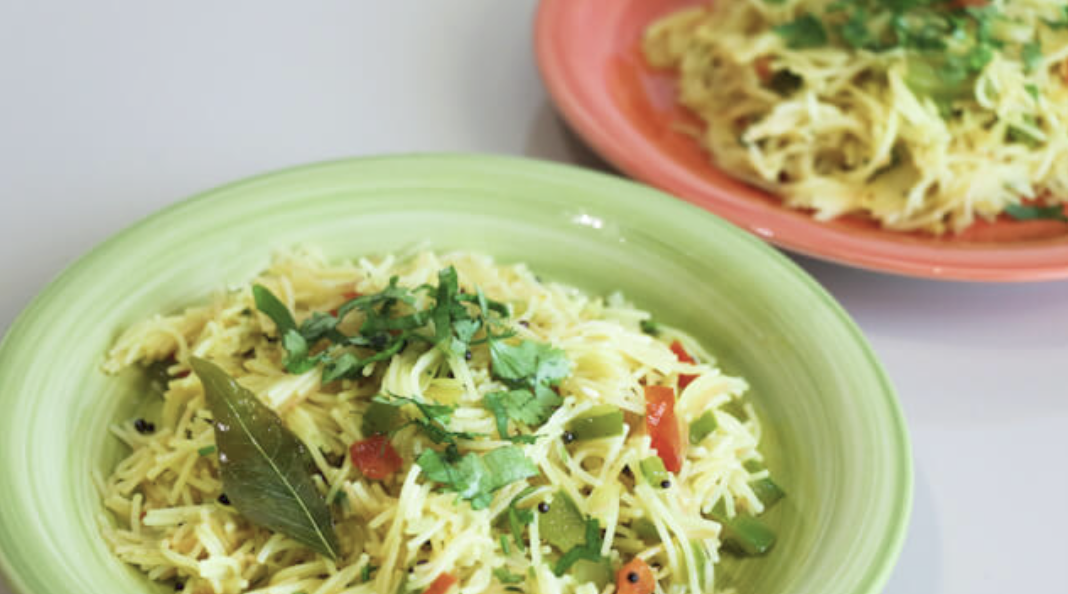
Vermicelli is a very thin pasta, similar to spaghetti, but much finer. In Asia, the term often refers to thin rice noodles.
In Italian cuisine, vermicelli is used in light sauces, soups, or as a base for seafood dishes. In Asian cuisines, it is used in stir-fries, spring rolls, and soups.
Vermicelli has a dual heritage, being significant in Italian and various Asian cuisines. In Italian, the name means “little worms,” reflecting its thin, delicate shape.
In Italy, it is made from durum wheat. In Asia, it is typically made from rice flour.
9. Egg Noodles

Egg noodles are broad, flat noodles made with wheat flour and eggs. They have a rich, yellow color and tender texture.
These noodles are commonly used in hearty dishes like chicken noodle soup, stroganoff, and casseroles.
Egg noodles are a traditional ingredient in many European and Asian cuisines. They are known for their rich flavor and ability to absorb sauces.
It is made from wheat flour and eggs, which provide a tender texture and rich taste.
10. Lo Mein

Lo Mein is a soft and chewy type of Chinese egg noodle often stir-fried with vegetables, meat, or seafood.
These noodles are typically used in stir-fry dishes, where they absorb the sauce and flavors of the other ingredients.
Lo Mein is a staple in Chinese-American cuisine, popularized in Western countries through Chinese takeout menus.
Made from wheat flour and eggs, similar to egg noodles, but typically thicker and more robust.
11. Chow Mein

Chow Mein noodles are thin, crispy noodles made from wheat flour and eggs. They are typically parboiled and then fried until crispy.
Chow Mein is often stir-fried with vegetables, meat, or seafood, resulting in a delightful contrast between the crunchy noodles and the soft ingredients.
Originating from Northern China, Chow Mein has become a staple in Chinese-American cuisine, known for its satisfying texture and flavor.
Made from wheat flour and eggs, these noodles are designed to hold up well during frying, giving them their characteristic crunch.
12. Somen

Somen noodles are very thin, and white Japanese noodles are made from wheat flour. They are typically served cold, especially during the summer months.
Somen is often served chilled with a light dipping sauce or cold broth, making it a refreshing dish in warm weather.
Somen has been a part of Japanese cuisine for centuries. It is particularly associated with summer dining and is often enjoyed during the Japanese festival of Tanabata.
Made from wheat flour, somen noodles are delicate and light. Their subtle flavor pairs well with simple broths or dipping sauces.
13. Ziti
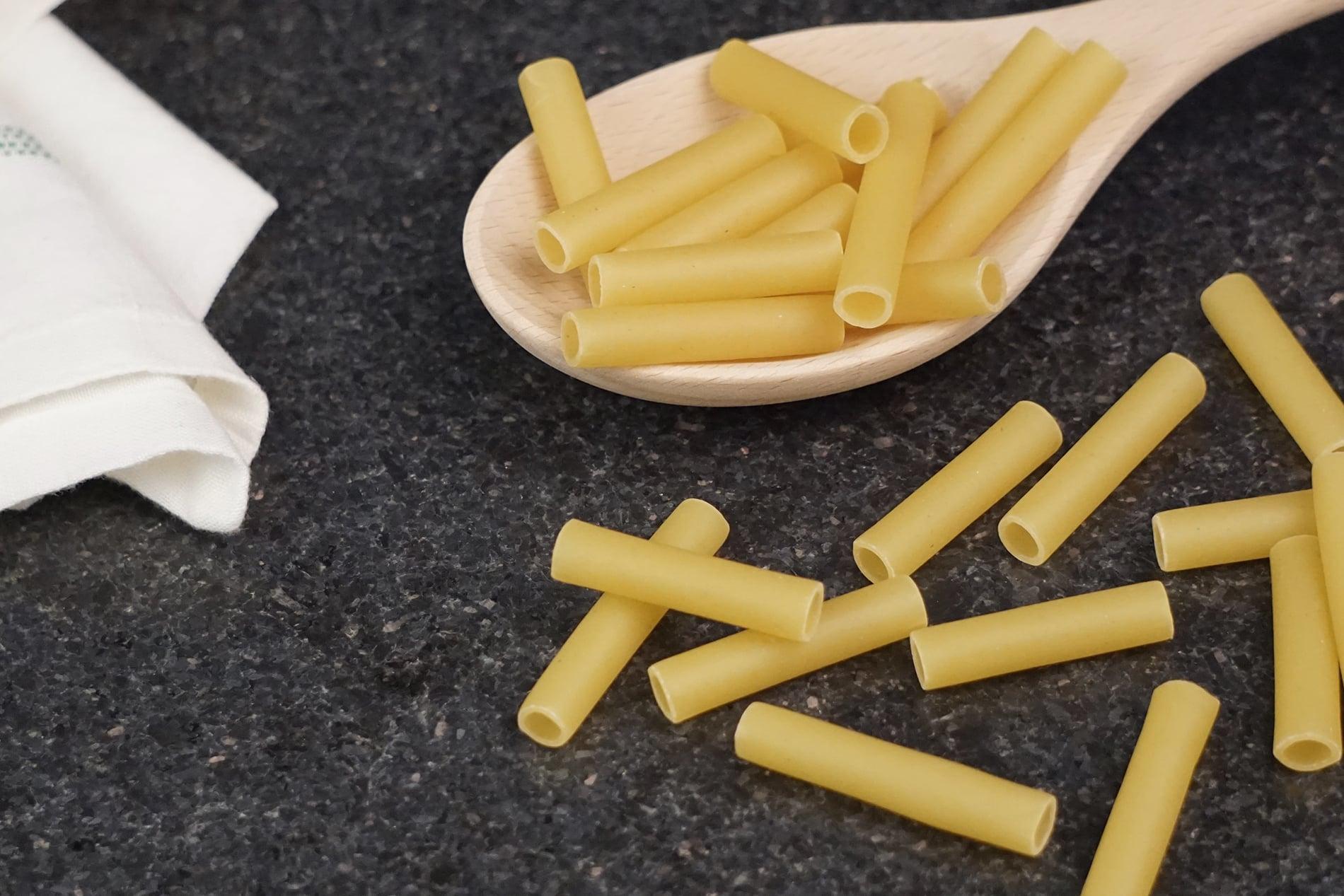
Ziti is a type of tubular pasta, similar to penne but with straight-cut ends and a smooth surface. It is slightly larger than penne.
Ziti is often used in baked dishes, such as baked ziti, where it can hold onto thick, hearty sauces and cheeses.
Ziti is a traditional pasta from Southern Italy, particularly in Sicily and Campania, where it is often served during celebrations and large gatherings.
Made from durum wheat semolina, ziti is sturdy and holds its shape well during baking.
14. Orzo
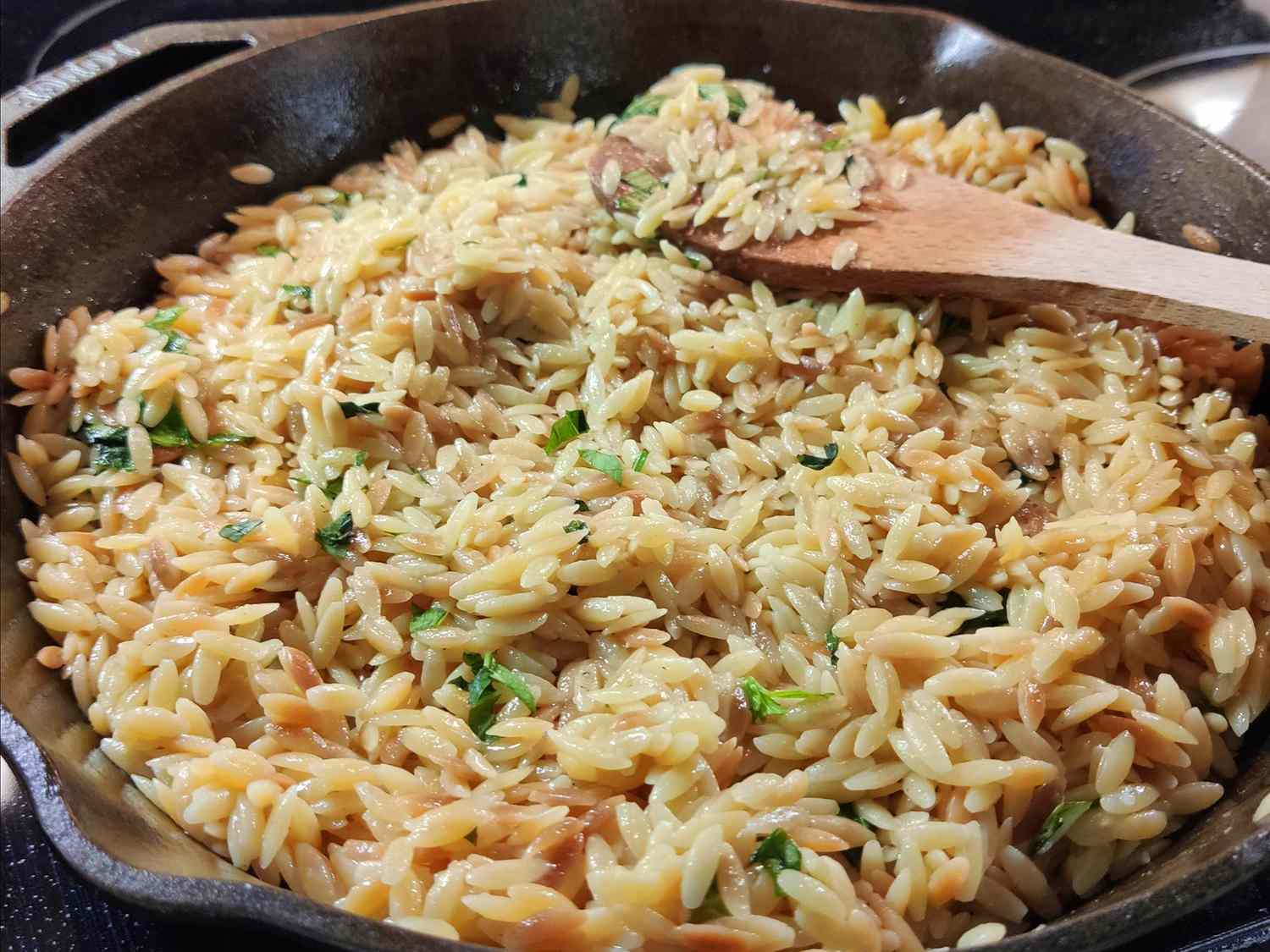
Orzo is a small, rice-shaped pasta often used in soups, salads, and casseroles. Despite its appearance, it is a type of pasta, not a grain.
Orzo is versatile and can be used in various dishes, from soups and stews to salads and baked dishes. It absorbs flavors well and cooks quickly.
Orzo is popular in Italian and Greek cuisines and is often used in comfort food dishes like soups and pilafs.
Made from durum wheat semolina, orzo is similar to other pasta but shaped to resemble rice grains.
15. Fusilli

Fusilli is a spiral-shaped pasta, also known as rotini. Its shape is designed to hold onto sauces, making it ideal for various dishes.
Fusilli is often used in pasta salads, casseroles, and dishes with chunky sauces. Its spiral shape traps sauces and other ingredients, ensuring each bite is flavorful.
Fusilli is a traditional pasta from Southern Italy made by hand for centuries.
Made from durum wheat semolina, fusilli is a versatile pasta that works well in hot and cold dishes.
16. Lasagna Noodles

Lasagna noodles are wide, flat pasta sheets used in the classic Italian dish lasagna. They are usually ridged on the edges.
These noodles are layered with sauces, cheeses, and meats or vegetables to create the famous baked dish. Their flat shape allows them to stack neatly, holding the layers together.
Lasagna is a traditional dish from the Emilia-Romagna region of Italy, and the noodles are essential to its structure and texture.
Made from durum wheat semolina, lasagna noodles are sturdy and hold up well under the weight of multiple layers of ingredients.
17. Pappardelle
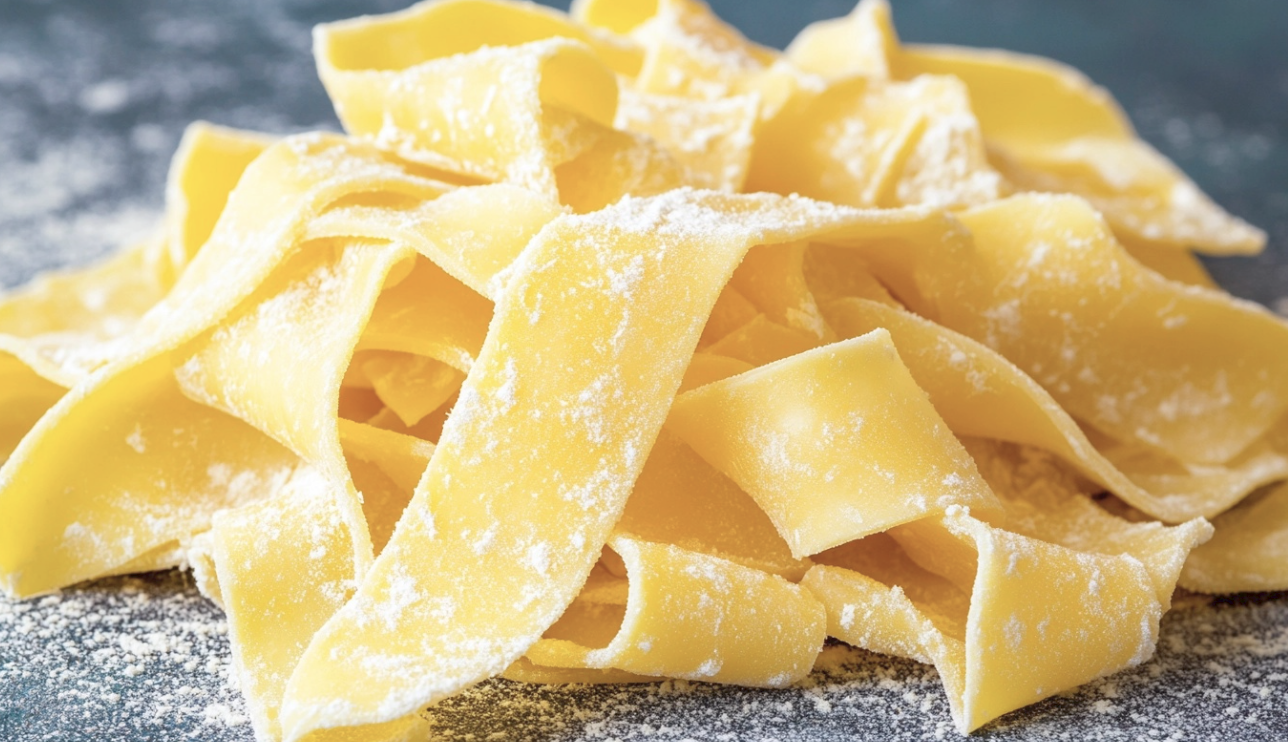
Pappardelle is a large, broad, ribbon-like pasta, wider than fettuccine. It is traditionally served with rich, hearty sauces.
Due to its wide surface area, pappardelle is perfect for holding thick, meaty sauces, such as ragu or Bolognese.
Originating from Tuscany, pappardelle is a traditional pasta used in regional Italian dishes. These dishes often feature game meats like wild boar.
Made from durum wheat semolina and sometimes enriched with eggs for a richer texture.
18. Fideo
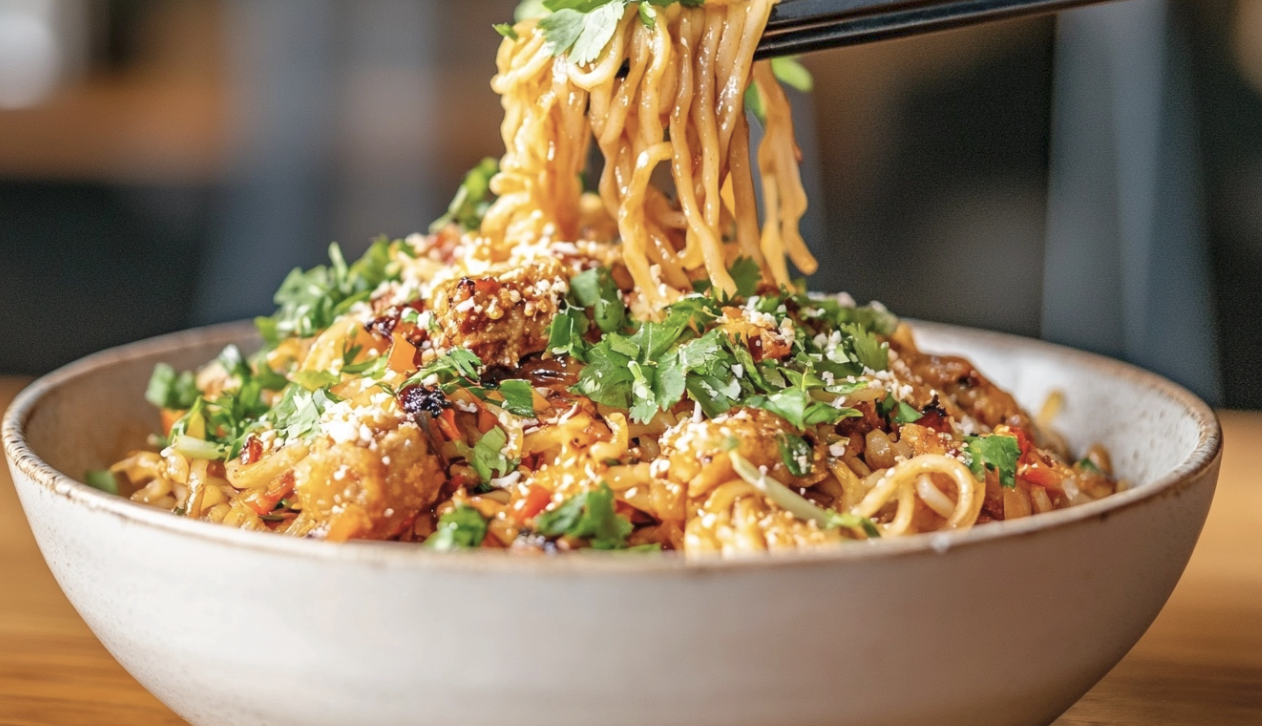
Fideo is a type of short, thin noodle commonly used in Mexican and Spanish cuisines. It is often cut into small pieces.
Fideo is typically used in soups and stews, where it adds texture and absorbs the broth’s flavors.
Fideo is a staple in Mexican and Spanish cooking, often found in comfort food dishes like sopa de fideo.
Made from wheat flour, fideo noodles are versatile and cook quickly.
19. Penne
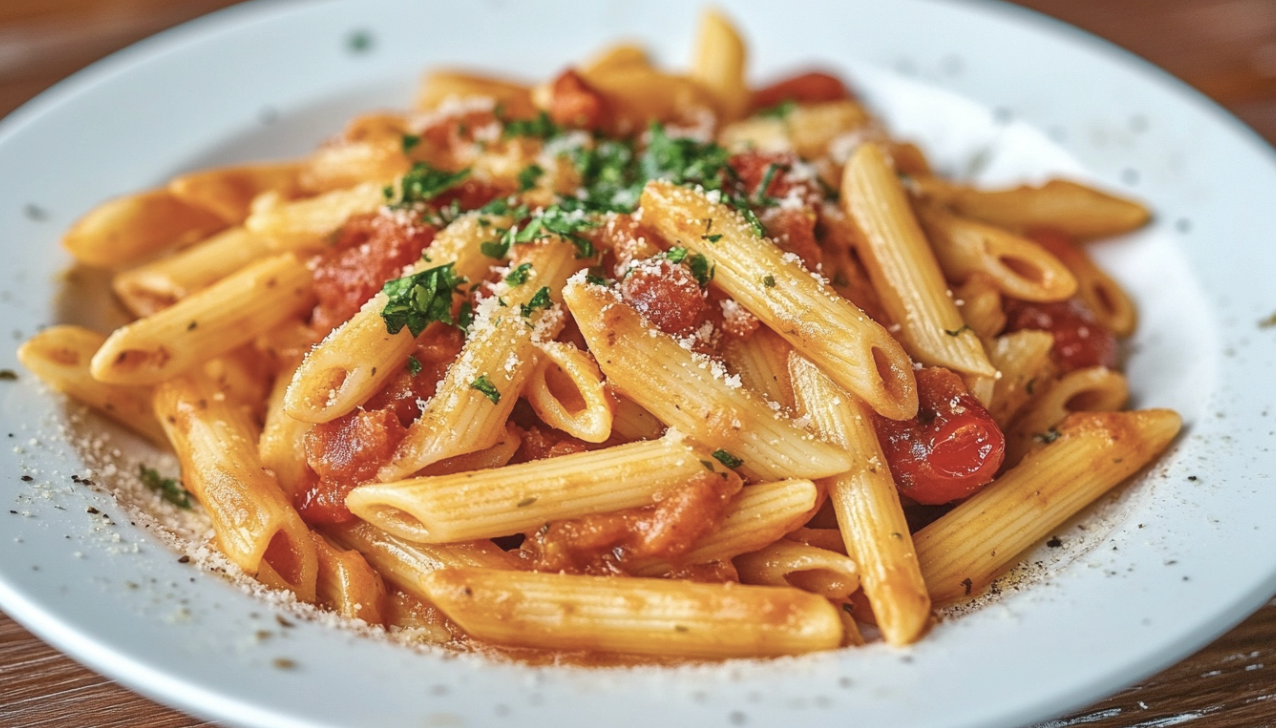
Penne is a short, tubular pasta with diagonally cut ends, available in smooth (lisce) or ridged (rigate) varieties.
Penne is ideal for holding sauces, both inside the tube and on the ridged surface. It is often used in baked dishes, salads, and with chunky sauces.
Penne is a classic pasta shape from Italy, particularly popular in the Campania region.
Made from durum wheat semolina, penne is sturdy and holds its shape well during cooking.
20. Tagliatelle

Tagliatelle is a long, flat ribbon pasta similar to fettuccine but slightly narrower. It is typically made with eggs for a richer flavor.
Tagliatelle is often served with rich sauces, such as Bolognese because it holds up well to heavier sauces.
Originating from the Emilia-Romagna region of Italy, tagliatelle is traditionally served with ragu, a meat-based sauce.
Made from durum wheat and eggs, tagliatelle is a versatile pasta that pairs well with various sauces.
21. Angel Hair
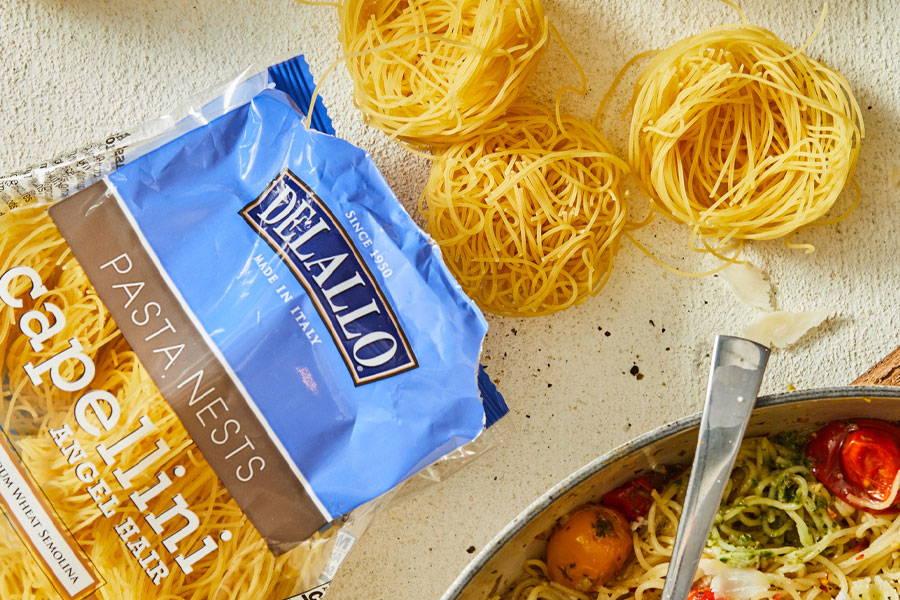
Angel hair, also known as capellini, is a very thin, delicate pasta that is similar to spaghetti but much finer.
Angel hair is best paired with light sauces, such as olive oil or tomato-based sauces, and is also commonly used in soups.
This pasta is popular in Italian cuisine, particularly for its quick cooking time and delicate texture.
Made from durum wheat semolina, it cooks quickly and has a tender texture.
22. Rigatoni
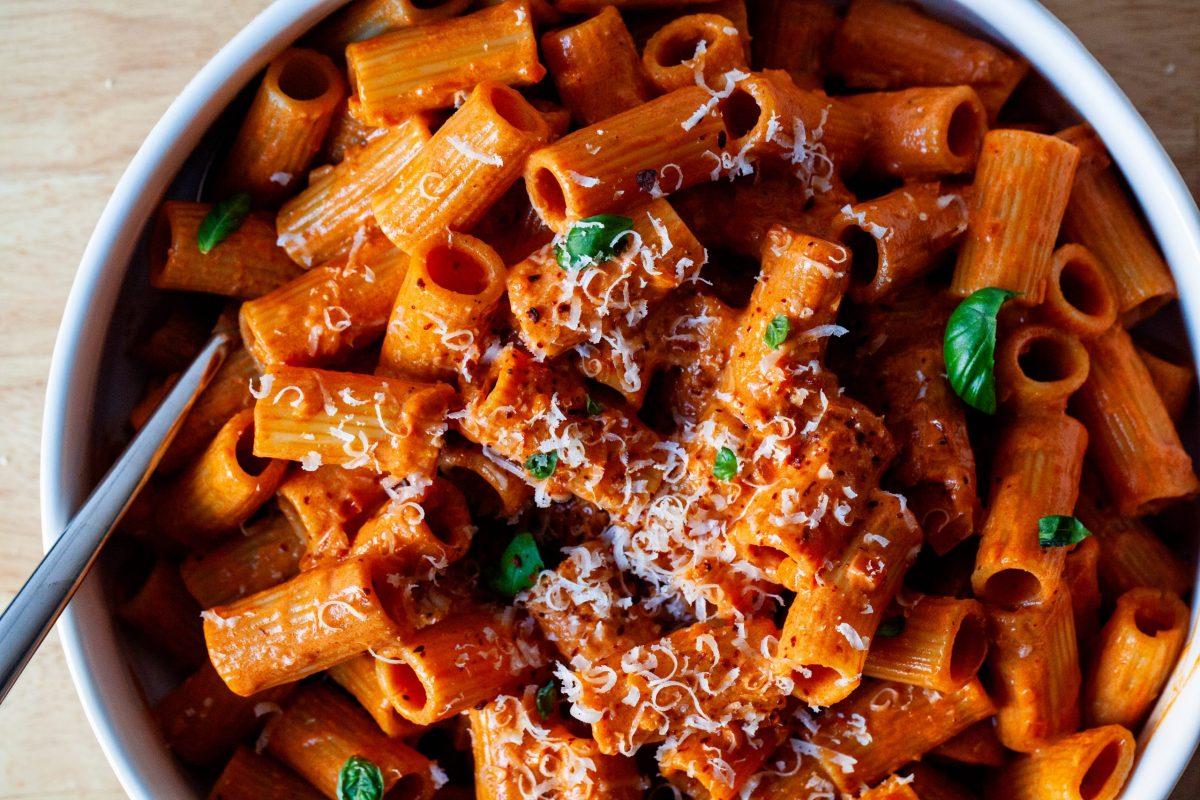
Rigatoni is a large, ridged, tube-shaped pasta, larger than penne, with straight-cut ends.
Rigatoni is ideal for hearty, chunky sauces, as its ridges and large size hold onto sauces well.
Rigatoni originates from Italy and is especially popular in Central and Southern Italian dishes.
Made from durum wheat semolina, it is a robust pasta that stands up well to baking.
23. Linguine

Linguine is a flat, narrow pasta, wider than spaghetti but not as wide as fettuccine.
Linguine is often paired with seafood, such as clams, or with pesto sauces, as its shape holds lighter sauces well.
Originating from the Liguria region of Italy, linguine is traditionally served with seafood.
Made from durum wheat semolina, it has a smooth texture and is well-suited to lighter, oil-based sauces.
24. Macaroni

Macaroni is a small, curved, tubular pasta commonly associated with macaroni and cheese.
Macaroni is ideal for baked dishes, soups, and salads, especially those with creamy or cheesy sauces.
Macaroni has been a staple in American cuisine, particularly in comfort food dishes like mac and cheese.
Made from durum wheat semolina, it holds its shape well in various cooking methods.
25. Farfalle

Farfalle, also known as bow-tie pasta, is shaped like small butterflies or bows.
Farfalle is versatile and works well in both cold salads and hot dishes, particularly with creamy or tomato-based sauces.
This pasta shape originated in the Lombardy and Emilia-Romagna regions of Italy.
Made from durum wheat semolina, farfalle is both decorative and functional in a variety of dishes.
26. Bucatini
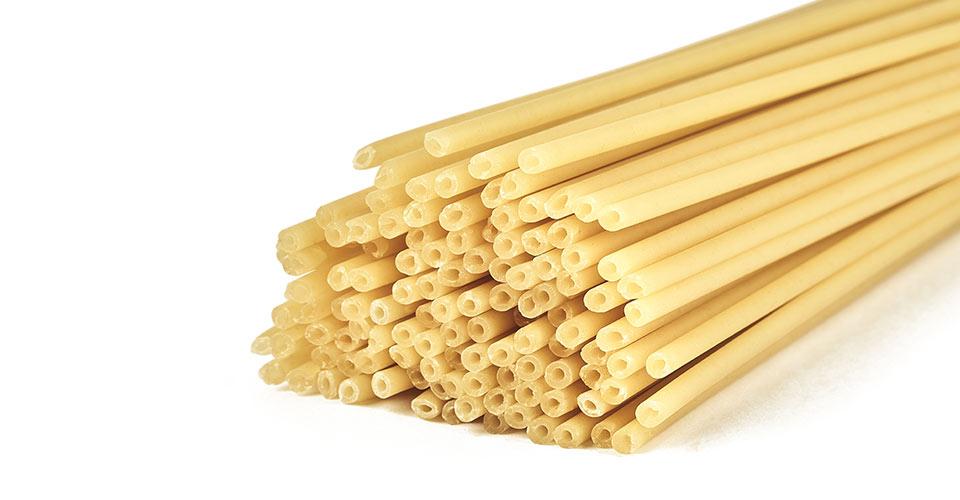
Bucatini is a thick, spaghetti-like pasta with a hollow center resembling a thicker spaghetti.
Bucatini is perfect for hearty, thick sauces, especially those with bits of meat or vegetables that can get caught in the hollow center.
Bucatini is traditionally used in Roman cuisine, particularly in the classic dish Bucatini all’Amatriciana.
Made from durum wheat semolina, its unique texture makes it stand out in pasta dishes.
27. Cavatappi
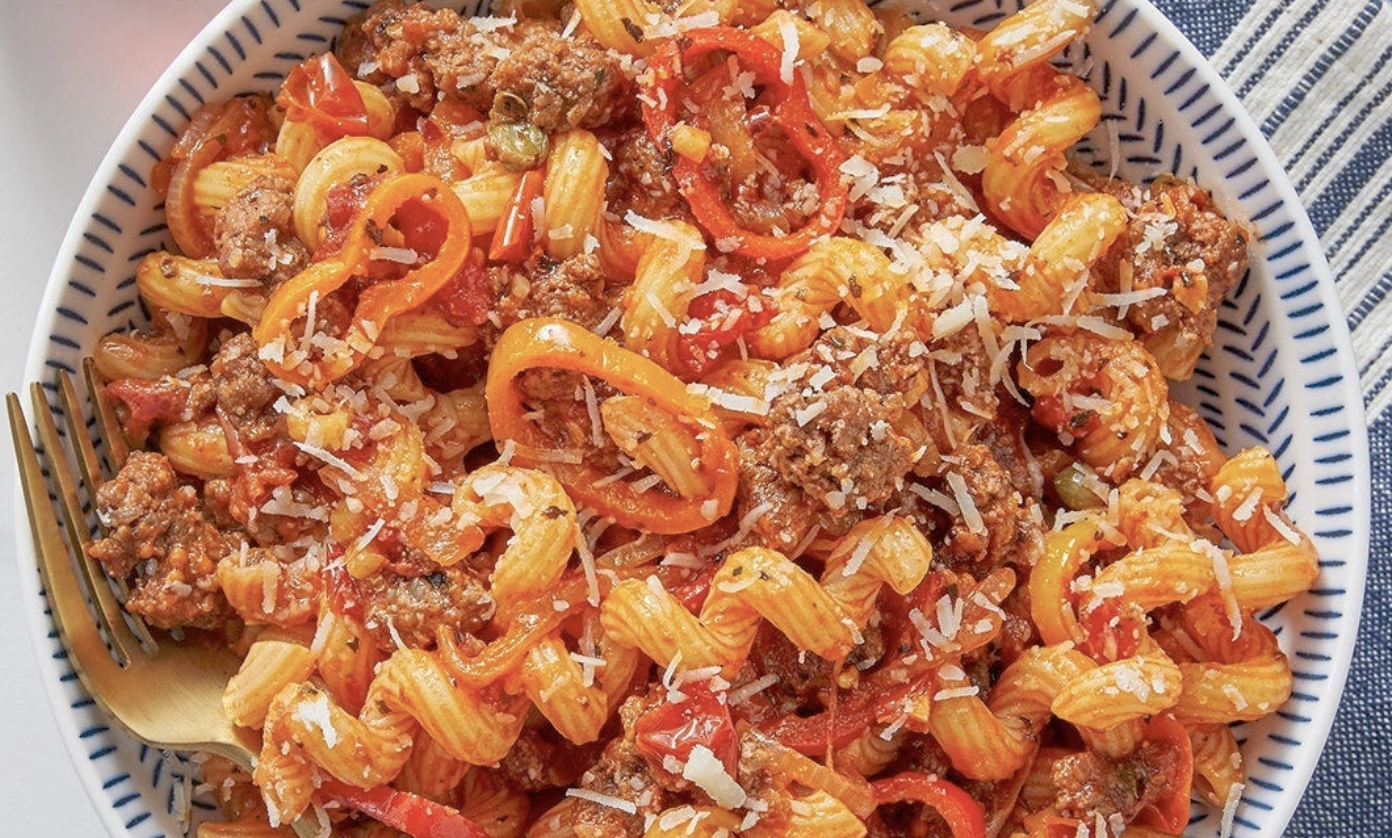
Cavatappi is a spiral-shaped pasta, similar to corkscrews, with a ridged surface that is perfect for holding onto sauces.
This pasta is great for baked dishes, salads, and chunky, thick sauces.
Cavatappi is popular in Italian-American cuisine, particularly in dishes that require pasta with a firm texture and plenty of surface area.
Made from durum wheat semolina, it is both sturdy and decorative.
28. Dan Dan Noodles
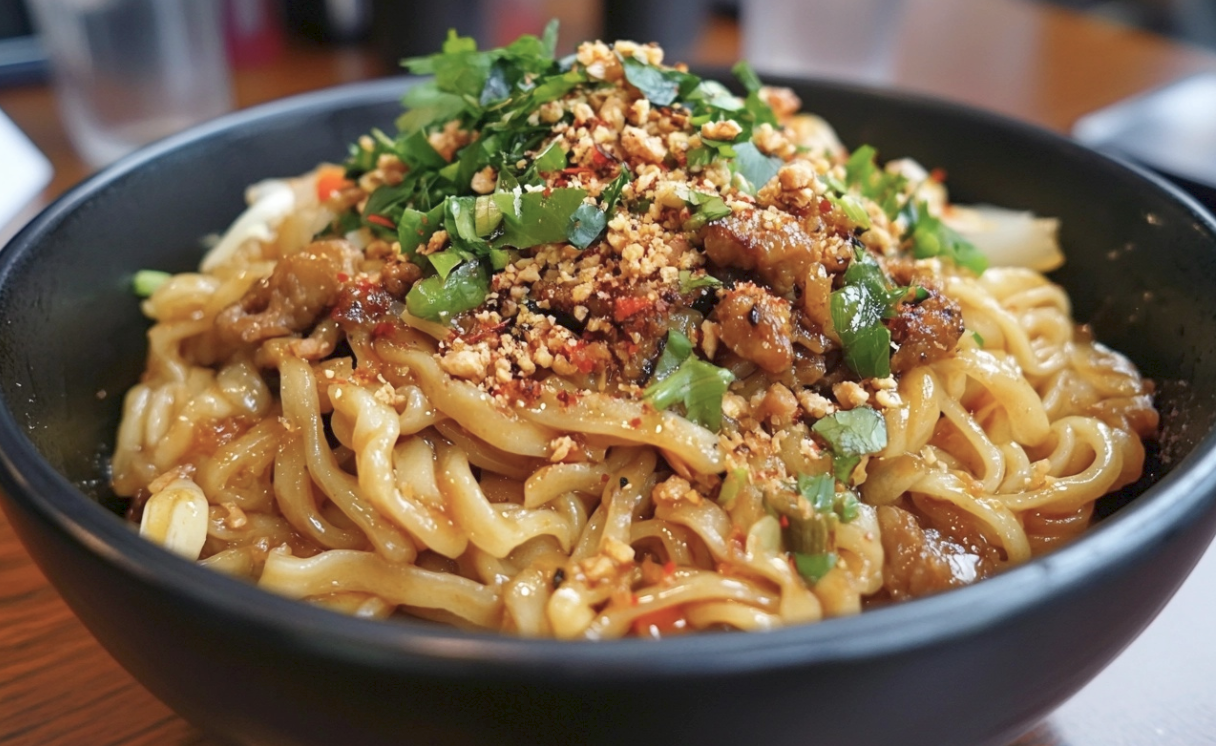
Dan Dan noodles are a type of Chinese wheat noodle, typically served in a spicy, savory sauce with minced pork and preserved vegetables.
These noodles are designed to be hearty and flavorful, absorbing the rich, spicy sauce that they are typically served with.
Dan Dan noodles are a traditional street food from Sichuan Province in China, known for their bold flavors.
Made from wheat flour, these noodles are typically thin and slightly chewy.
29. Spaetzle
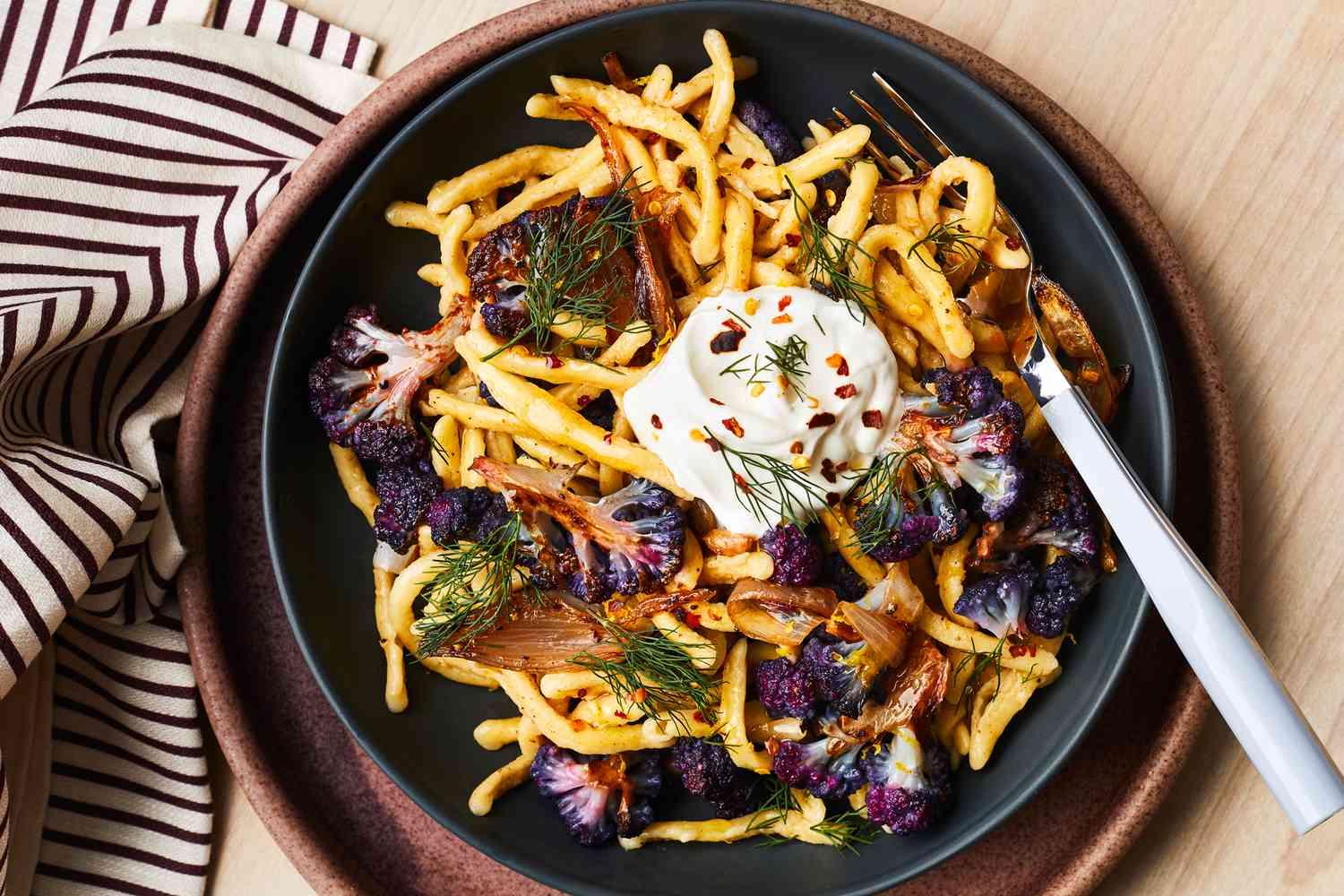
Spaetzle are small, irregularly shaped egg noodles that are soft and chewy, often used in German and Central European cooking.
Spaetzle is often served as a side dish, similar to pasta or dumplings, and is frequently paired with meats and gravies.
Spaetzle is a traditional German, Austrian, and Swiss dish, often associated with comfort food.
Made from wheat flour, eggs, and milk or water, spaetzle has a tender, chewy texture.
30. Soba
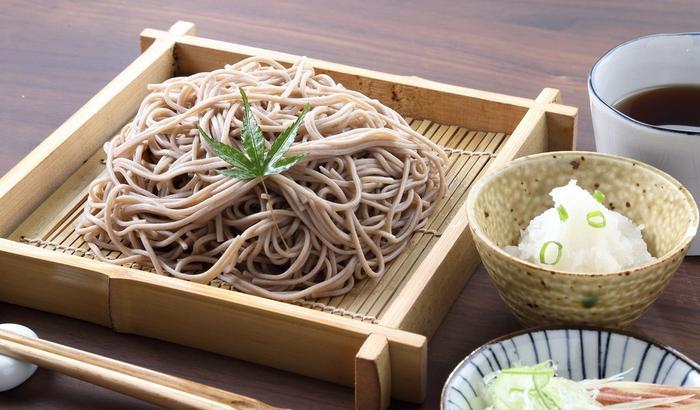
Soba noodles are thin, buckwheat noodles that are slightly nutty in flavor and often darker in color than wheat noodles.
Soba can be served in a broth or with a dipping sauce. It is also a popular ingredient in salads and stir-fries.
Soba is a traditional Japanese noodle with a history dating back hundreds of years. It is often eaten during special occasions like New Year’s Eve (Toshikoshi Soba).
Made primarily from buckwheat flour, sometimes blended with wheat flour for elasticity.
31. Shirataki

Shirataki noodles are thin, translucent noodles made from the konjac plant. They are known for being extremely low in calories and carbohydrates.
Shirataki noodles are often used in low-calorie or low-carb diets as a substitute for traditional pasta.
These noodles are commonly used in Japanese cuisine and have gained popularity worldwide as a health-conscious alternative to traditional noodles.
It is made from the konjac yam, high in glucomannan, which is a dietary fiber.
32. Korean Noodles (Jjajangmyeon)
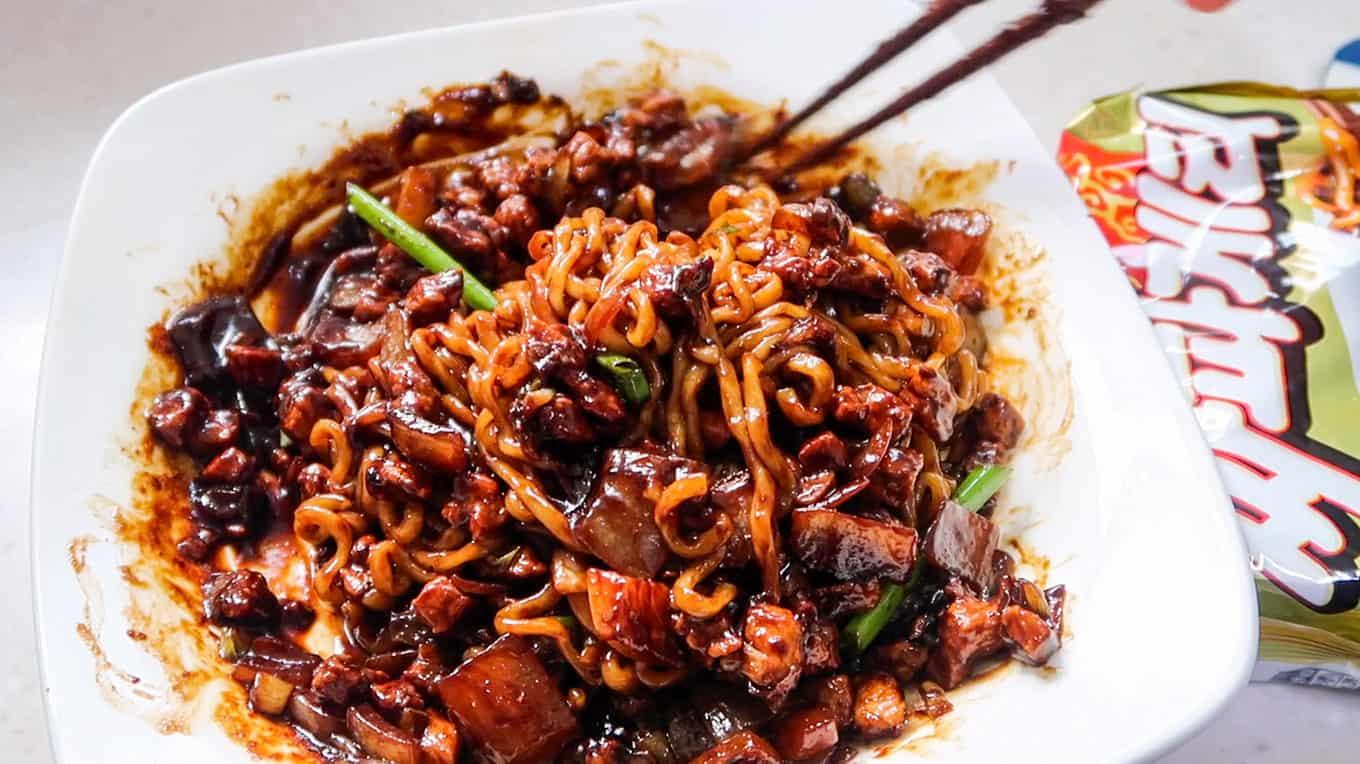
Jjajangmyeon noodles are thick, wheat-based noodles used in the popular Korean-Chinese dish Jjajangmyeon, which features a savory black bean sauce.
These thick and chewy noodles are designed to soak up the rich, savory black bean sauce.
Jjajangmyeon is a popular comfort food in Korea, often enjoyed as a casual meal.
Made from wheat flour, these noodles are thick and substantial, holding up well to the hearty sauce.
Conclusion
From the delicate strands of angel hair to the hearty tubes of rigatoni, each type of noodle brings its unique texture, flavor, and cultural significance to the table.
Understanding these various noodles enhances your cooking and deepens your appreciation for the rich traditions behind each dish.
Whether you’re preparing a comforting bowl of ramen, a classic Italian pasta, or an exotic stir-fry, knowing the right noodle to use can make all the difference in creating an authentic and delicious meal.
So, what are you waiting for? Begin your noodle adventures today!
